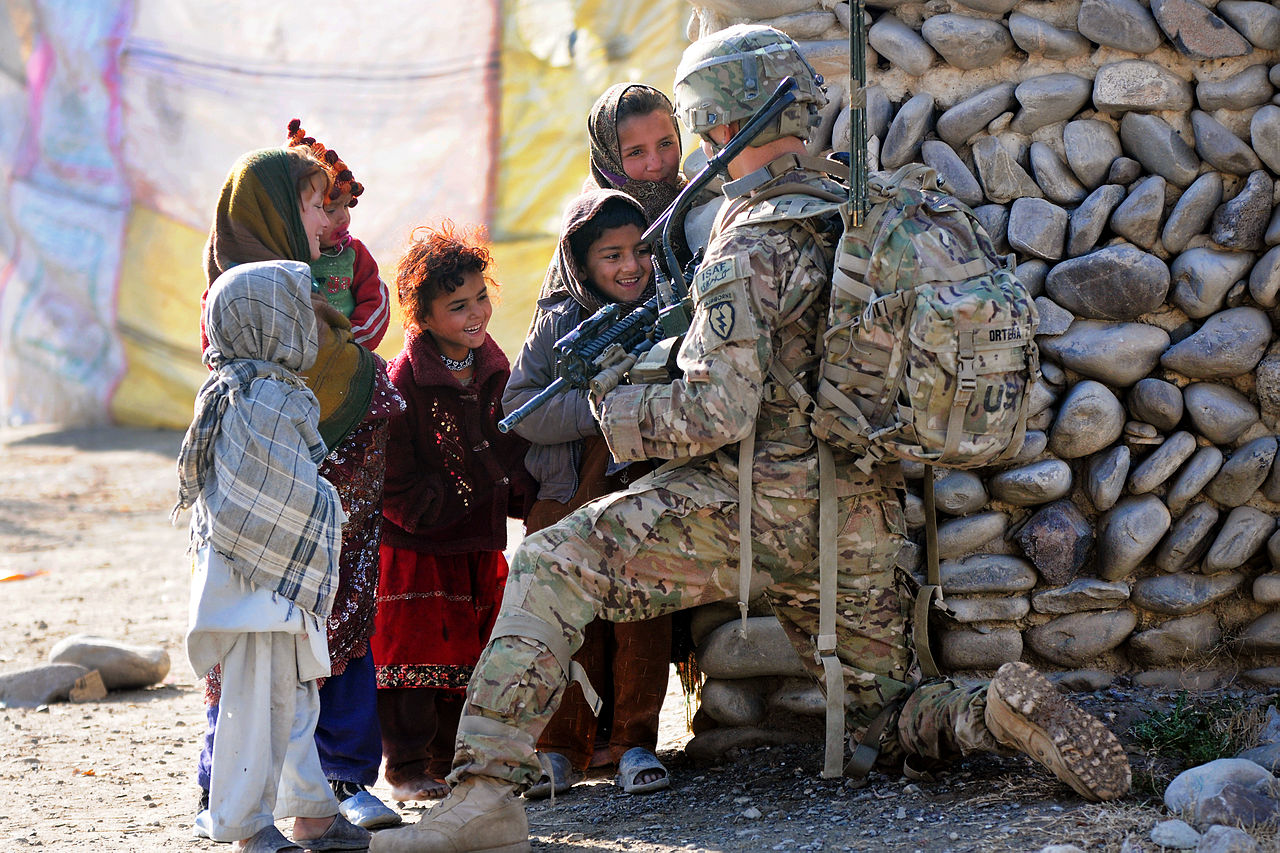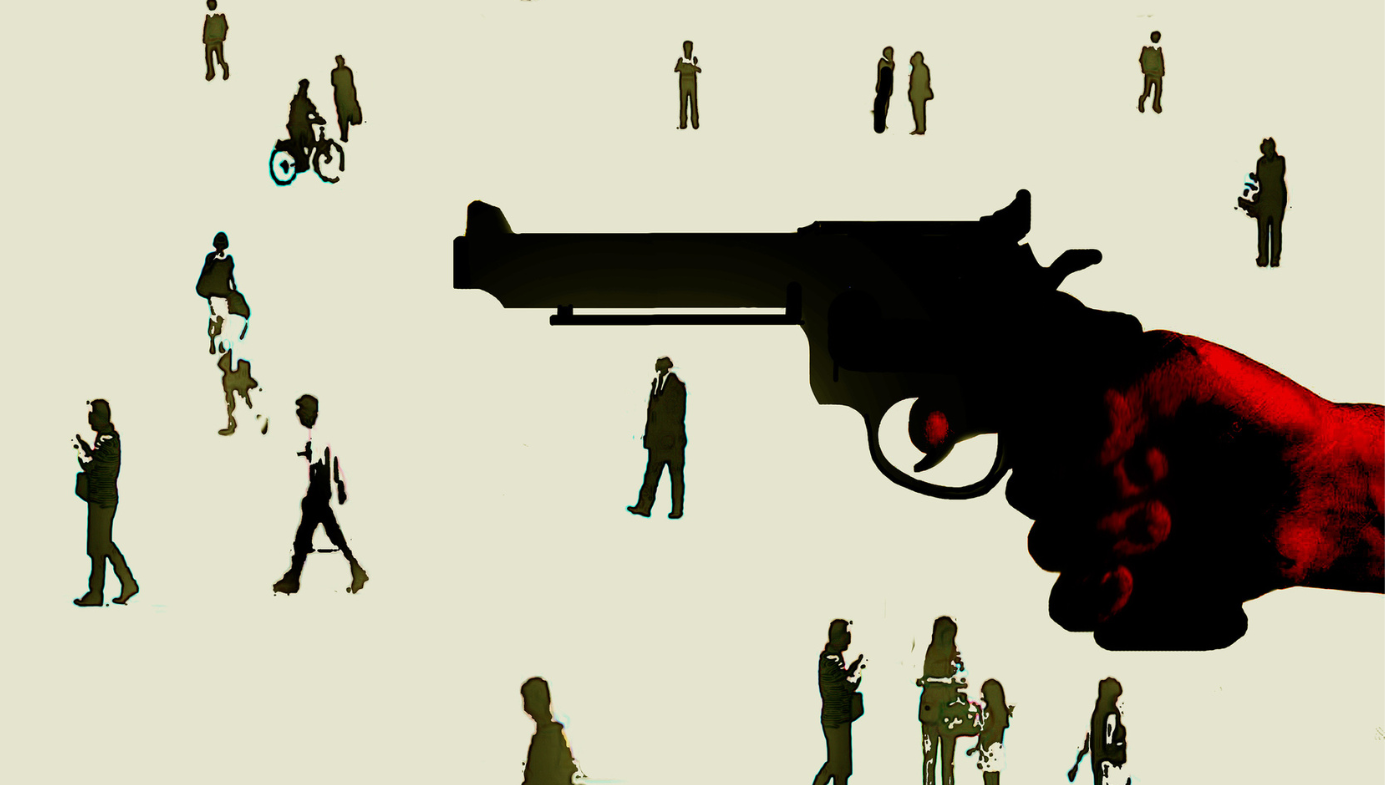Top Stories
The Illusion of a Gentle Machine Gun Hand
In the United States, by contrast, hawkish politicians tend not to downplay the traditional war-fighting role of the military.

On May 31, 2018, Canada’s Minister of Public Services and Procurement announced the construction of new Joint Support Ships (JSS) for the Royal Canadian Navy. “With the construction of the JSS,” declared Carla Qualtrough, “our government is delivering on our commitment to support the men and women of the Royal Canadian Navy as they undertake humanitarian and military missions on behalf of our great country.” While the core capability of the JSS will be the “provision of fuel, ammunition, spare parts, food, water, and other supplies to warships at sea,” the Minister presented these ships as instruments of humanitarian operations, not war or peacemaking.
The messaging from Justin Trudeau’s dovish Liberal government in regard to the JSS is part of a larger trend, whereby many Western governments now seek to downplay the true character of their tools of war—in large part because they know that voters now have little stomach for contemplating the idea of actual combat. While such messaging may provide comfort, it causes a rift between citizens and military personnel when wars must be fought. Conditioned to view their military as a globe-trotting emergency-response service, the public is taken by surprise when hostilities break out.
In the United States, by contrast, hawkish politicians tend not to downplay the traditional war-fighting role of the military. Just the opposite: They accentuate it—sometimes to a fault. Indeed, reverence for the military runs so high that aggressive warfare sometimes is proposed as a solution to purely economic or political challenges.
In 2017, the annual U.S. defence budget was expanded by US$54bn—a sum larger than Russia’s entire yearly defence spending. When faced with a diplomatic and humanitarian challenge in Venezuela, President Donald Trump reportedly asked if invasion was the appropriate response. (The obvious answer was no.) He also seemed to believe that indiscriminate carpet bombing of Iraq could solve the region’s intractable problems, and has casually aired the idea of attacking North Korea and Iran. Some U.S. liberals were so dismayed with the result of the 2016 election that they were driven to muse about a military coup. The preponderance of former generals in Trump’s cabinet would be seen as problematic in most democratic countries. But in the United States, they are widely viewed as guardians of the country’s true character.
The larger problem, in North America and Europe alike, is that ordinary citizens and their leaders are becoming disconnected from the real capabilities, uses, and limitations of military power. In Canada, Europe, and Japan, the dominant conceit is pacifistic. In the United States, it is militaristic. Neither is healthy for democracy.
The true and proper role for the military in all cases is to pursue the political goals of the state—but only when all other methods of achieving such goals have been exhausted. As the godfather of military studies said: “War is merely the continuation of policy by other means.” Carl von Clausewitz also warned that no nation should field an army unless it is willing to accept the costs that go along with the act of deployment. Armies do not go to war. Entire nations do, both through the sacrifice of sons and daughters, and the payment of war’s costs.
When did Western populations begin losing touch with the purpose of their military forces? One factor has been the move from the citizen army to a professional model, which allowed armies to become smaller and more effective, but also loosened ties with society at large. Another factor is the lack of large-scale conflict in our era; and the consequent peace dividend, which, following the end of the Cold War, allowed politicians to shift funds from defence to welfare and tax cuts. During the Cold War, and the hot wars that preceded it, the risks and reality of conflict had to be communicated to citizens in a generally honest way. Once the Berlin Wall fell, this changed—notwithstanding the interregnum of 9/11 and the regional wars that followed.

Each country features its own particular political factors, as well. In Germany, the ghosts of fascism and militarism continue to exert their influence. In Canada, the desire to create a national identity that stands reflexively opposed to the United States has led politicians to focus on ‘peacekeeping’ as a means to differentiate the country from the supposedly more warmongering Americans. And in Japan, a postwar constitution prevents the existence of an armed forces per se (even if successive governments in that country still have found a way to develop the world’s eighth largest defence budget).
In the United States, by contrast, all problems tend to look like a nail—because the American public has come to believe in their country’s enormous air-power capabilities as the ultimate hammer. The success of precision-guided munitions in the first Iraq war, and then again in the Kosovo campaign, have created the misapprehension that such successes can be repeated. (The ongoing war in Afghanistan, now almost 17 years old, betrays the naïveté of such beliefs.)
Because the impulses at play in the United States act in reliable opposition to those in other Western countries, there is a predictable pattern that plays out when the world suffers a humanitarian crisis caused by violence: Americans tend to express an underlying belief that some form of military invention could solve the problem, but are wary about the underlying idea of humanitarian intervention. Other Western populations are more culturally conditioned to view such interventions as morally legitimate, but also tend to recoil at the prospect of either taking innocent lives with airstrikes, or losing the lives of their own sons and daughters if boots on the ground are required.
By the time a global emergency develops, it is too late to prepare a population for the sacrifices that war entails. Responsible political leaders have to take the long-term view by explaining to voters, beforehand, why their country has a military, what it could be asked to do, and, yes, the real possibility that lives may be risked and lost when deployments occur. Unfortunately, such candor is often mischaracterized as a form of populist hawkishness. To talk about the possibility of kinetic military responses is (wrongly) seen as actively welcoming or glorifying the horrors of war.
Military recruiters and communications officials themselves often embrace a strategy of depicting soldiers as Emergency Medical Services workers rescuing civilians from floods, or inoculating children in the developing world. The cover of a Canadian defence policy document released in 2017, for instance, features a collage of seven pictures:

Only two of these photographs depict military personnel in combat situations; one depicts a uniformed soldier greeting what is presumed to be his own daughter; two depict humanitarian missions; and one shows two people working over a map. In true Canadian fashion, the last shows a soldier on a snowmobile. New Zealand’s 2018 defence white paper opens with a full-page glossy of a helicopter team on a medical mission, helping a little girl wearing a princess backpack. In the 2016 version of the same document, the first mention of operations in the Prime Minister’s opening statement related to earthquake response.
As the post-Cold War system breaks down, and the unipolar world becomes multi-polar, conflict between nation states has again become conceivable—thanks in large part to increasingly assertive postures by Russia and China. And some Western democracies, to their credit, are waking up to this renewed threat. Sweden is bringing back conscription, and last month distributed pamphlets, not seen since the Cold War, explaining what to do if the country were to be occupied by a foreign power. Denmark has announced it will be creating a battlegroup purposed for deployment to the Baltic region in the event of a Russian invasion. Australia is executing a massive recapitalization of its Navy and Air Force. But even in these countries, discussions at the political level—especially during election campaigns and in media interviews—often bypass harsh geopolitical realities.
When Canada recently sent an infantry battalion to Latvia, Canadians were told that “NATO’s enhanced Forward Presence is part of a defensive and proportionate response to the evolving security environment in the region. The Battlegroup is training with the Latvian Land Forces Infantry Brigade, with which it will work hand-in-hand to deter, and if necessary help defend, the people of Latvia from aggression.” This statement is full of euphemisms. In reality, these soldiers are being sent on a dangerous and possibly even fatal mission: They constitute what is called a tripwire—a force whose role in war is, in effect, to prove to the world that a real invasion has taken place, by means of their getting killed, wounded, or captured. Canada and its allies would be expected to further commit to the campaign because the enemy has already proven its aggressive intentions by drawing first blood.
As of this writing, it appears that the NATO commitment to the Baltic nations has had its intended effect. The Russians have slowed down information campaigns against these countries, and it now seems unlikely that a Ukrainian-style hybrid war will be used to carve off Russian-speaking areas. But the Russian method of warfare—whereby belligerents use a mix of propaganda, guerilla attacks, cyberwarfare, economic pressure and conventional tactics—likely provides a template for the way state actors fight in the future. This includes China, as it seeks to exert control over the South China Sea.
In the wake of a 2012 U.S. presidential debate, Mitt Romney was famously mocked for suggesting that Russia was America’s greatest geopolitical foe. “The 1980s called, they want their foreign policy back” Barak Obama quipped. Since then, Russia has invaded and occupied parts of Ukraine, and attempted assassination with chemical weapons on British soil. Obama got his laughs, but the joke no longer sounds particularly funny.
It is during actual deployments when the distance between political rhetoric and boots-on-the-ground reality can be become widest. The ongoing War on Terror, in particular, periodically results in troops dying in obscure corners of the world that few ordinary people even know to be battlefields. In many cases, these deployments are sold as training or ‘advise and assist’ operations—as with European and now Canadian deployments to Mali. Missions described as ‘peacekeeping’ are usually, in fact, focused on counter-insurgency and state-building. American, French, and British (and potentially Australian) Freedom of Navigation Operations (FONOPS) in the South China Sea risk escalating into legitimate Great Power confrontations. U.S. Secretary of Defence Jim Mattis tells reporters that these are “international waters, and a lot of nations want to see freedom of navigation. So we’ll continue that.” But the Chinese describe FONOPS as a “serious military provocation.”
One partial strategy for addressing these issues would be to preserve the military’s traditional sense of mission by creating dedicated humanitarian agencies equipped with hospital ships, helicopters, and other dual-use equipment such that would enable a vigorous response to humanitarian crises. This compartmentalization of mission would help provide a reality check when politicians seek to gloss over the real purpose of equipment procured for the military.
Another solution, though one that admittedly would require a generational time frame to play out, would be to reform primary education in way that helps educate students about an important historical lesson: that the freedoms we enjoy in the West came about in large part because of hard-fought victories on the battlefield. When children aren’t taught why we have a military, they cannot be expected to become adult voters who support the troops.
There is perhaps no greater threat to liberal democracy than the spirit of pacifistic complacency that emerges in peaceful times. An honest conversation about the role of our armed forces in the world can help ensure that this complacency does not metastasize to such point that we cannot defend ourselves against the foreign threats that already are beginning to stir themselves on our allies’ borders.






